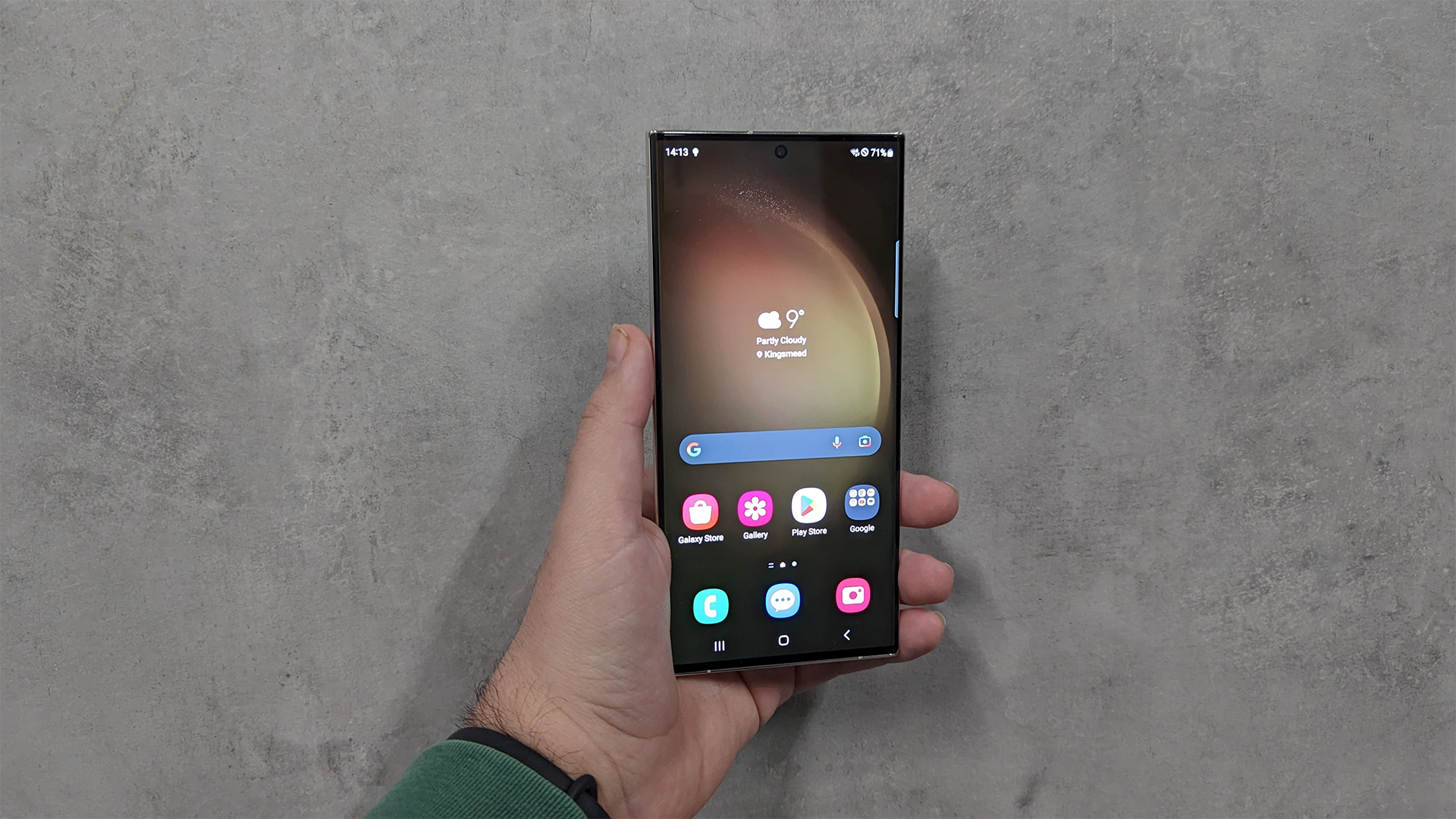What Hi-Fi? Verdict
The Samsung Galaxy S23 Ultra is a solid all-rounder, but it’s outdone in both the sound and picture departments by Apple and Sony
Pros
- +
120Hz display
- +
Next-generation camera
- +
Fantastic build
Cons
- -
Expensive
- -
Minimal AV updates over last year
- -
Tough competition
Why you can trust What Hi-Fi?
2022 signified an evolutionary year for Samsung’s Galaxy smartphone line, as the brand unified the S and Note devices into one smartphone, dubbed the Galaxy S22 Ultra. With a huge AMOLED display, S-Pen support and top-of-the-line specs and build quality, it really lived up to its Ultra name.
A year on, Samsung has followed up on its former flagship with the Galaxy S23 Ultra; a phone that is equally massive and fully featured, that basically represents the no-compromise approach for Android phones. But with minimal upgrades over last year’s model accompanied by an increase in price, does the S23 Ultra still represent the ultimate Android phone?
Price
There’s no escaping the slow creep-up of prices we’ve seen on many smartphones this release cycle, and the Galaxy S23 Ultra is no exception – unless you live in the States. The S23 Ultra starts at £1249 / $1199 / AU$1949; that places it well above the iPhone 14 Pro Max and even its predecessor in the UK and Australia; however, the price stays the same as last year in the US. It is slightly cheaper than the Sony Xperia 1 IV, our current favourite Android phone, although if you shop around you may be able to find the Xperia has dropped in price since its launch in June of last year.
For your money, you get the new and exclusive Qualcomm Snapdragon 8 Gen 2 for Galaxy processor (more on that later), 12GB of RAM and 256GB of storage. There are also 512GB and 1TB storage configurations, with the latter serving as a Samsung.com store exclusive.
Build
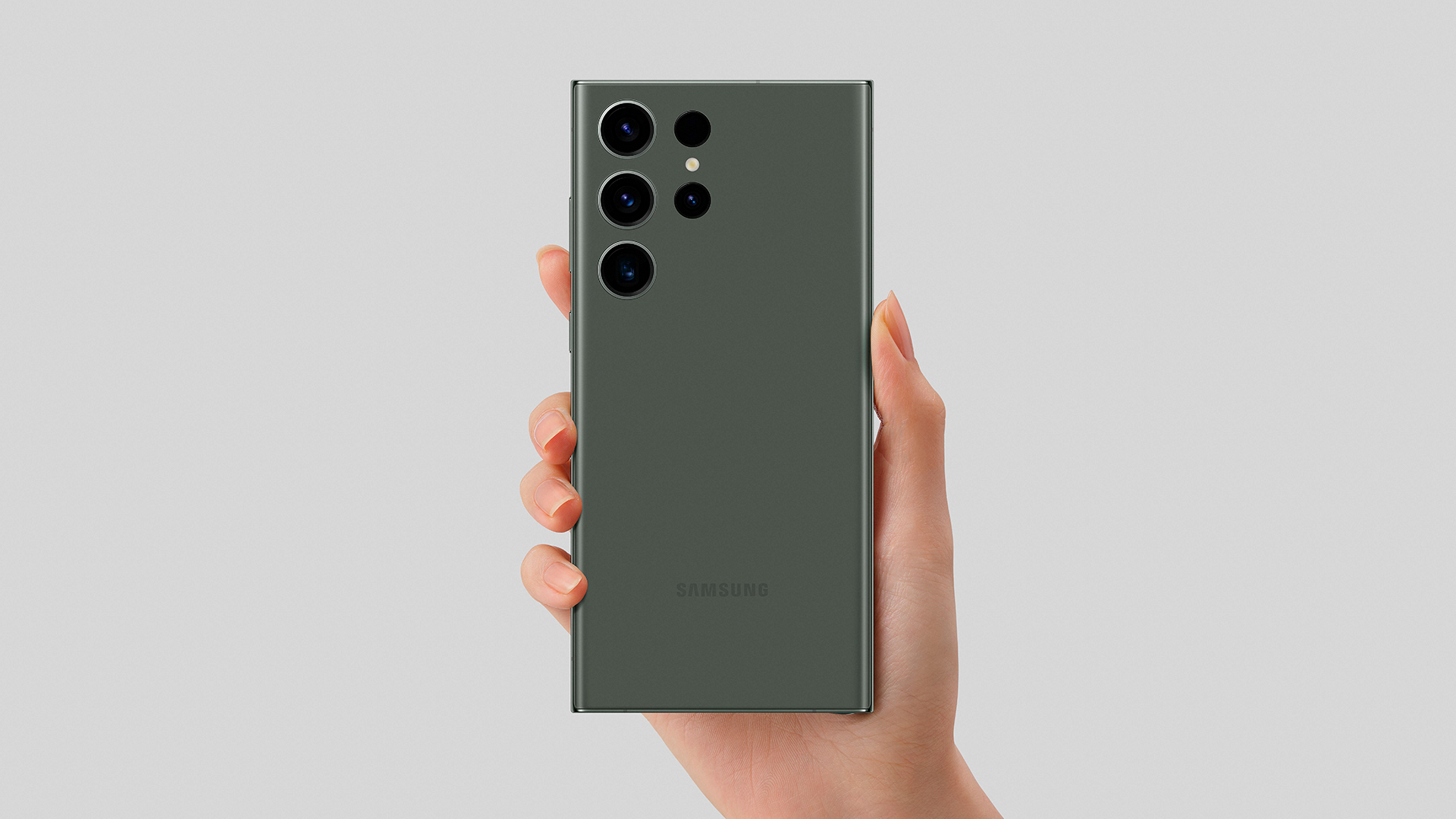
The Galaxy S23 Ultra’s build is fantastic, but it's also almost identical to that of its predecessor. Its casework is solid and high quality, making it look as good as it feels in the hand, with smooth aluminium rails around the edge of the device, and a matte glass rear panel that makes the phone less likely to slip out of your hand or off the side of a table.
The added grip to the rear panel is necessary with this phone, as it takes some fairly intense hand-gymnastics to navigate if you’re using it one-handed. We find ourselves shuffling the phone around in a slightly awkward (and dangerous) fashion when going from the navigation controls at the bottom to the notification panel at the top. Thankfully, Samsung has built in some one-handed mode functionality and smart software tricks that make it more manageable at times, such as being able to swipe up anywhere on the home screen to get to the apps menu or down anywhere to expand the notification panel. Still, there’s no way of getting around the fact that this phone is massive.
To be precise, its screen is 6.8 inches diagonally and the handset weighs 234g in total – making it very similar to the iPhone 14 Pro Max in stature and heft. Against its nearest Android rival, the Xperia 1 IV, it's practically identical in height, but the Sony’s 21:9 aspect ratio makes it the skinnier of the two devices.
The latest hi-fi, home cinema and tech news, reviews, buying advice and deals, direct to your inbox.
Features

The Galaxy S23 Ultra is practically the definition of feature-packed – but then so was its predecessor. So what’s new here? The main feature that Samsung is advertising with the Ultra is its advanced camera system, with the main sensor coming in at 200MP, an increase from the S22 Ultra’s 108MP main camera. This is backed up with a 10MP periscope telephoto lens, a 10MP telephoto lens and finally a 12MP ultrawide camera. In practice, the camera on the S23 Ultra is brilliant, fusing top-notch performance with intuitive software, meaning even the most amateur of photographers can snap a quality image.
Elsewhere, little has changed for the Galaxy S23 Ultra. It features a very similar 120Hz 1440p screen as did year's model, for example. Not that that's an issue in general use, though, as it's still a joy to interact with. Whether it’s swiping and tapping through the One UI 5.1 operating system or scrolling through social media and news feeds, the S23 Ultra’s display is just as silky smooth and sharp as you’d want it to be. On the topic of One UI, Samsung is shipping its latest software on the S23 Ultra, adding a few new quality-of-life improvements and camera shooting modes, but otherwise, there doesn’t appear to be any drastic changes to the OS this year.
Underneath that display is a fingerprint sensor for biometric unlocking and authentication. It's lightning fast, unlocking the device with just a quick tap, making it much quicker and more accurate than the likes of the Google Pixel 7. There is also a 12MP hole-punch-style front-facing camera that can be used for facial recognition as an alternative.
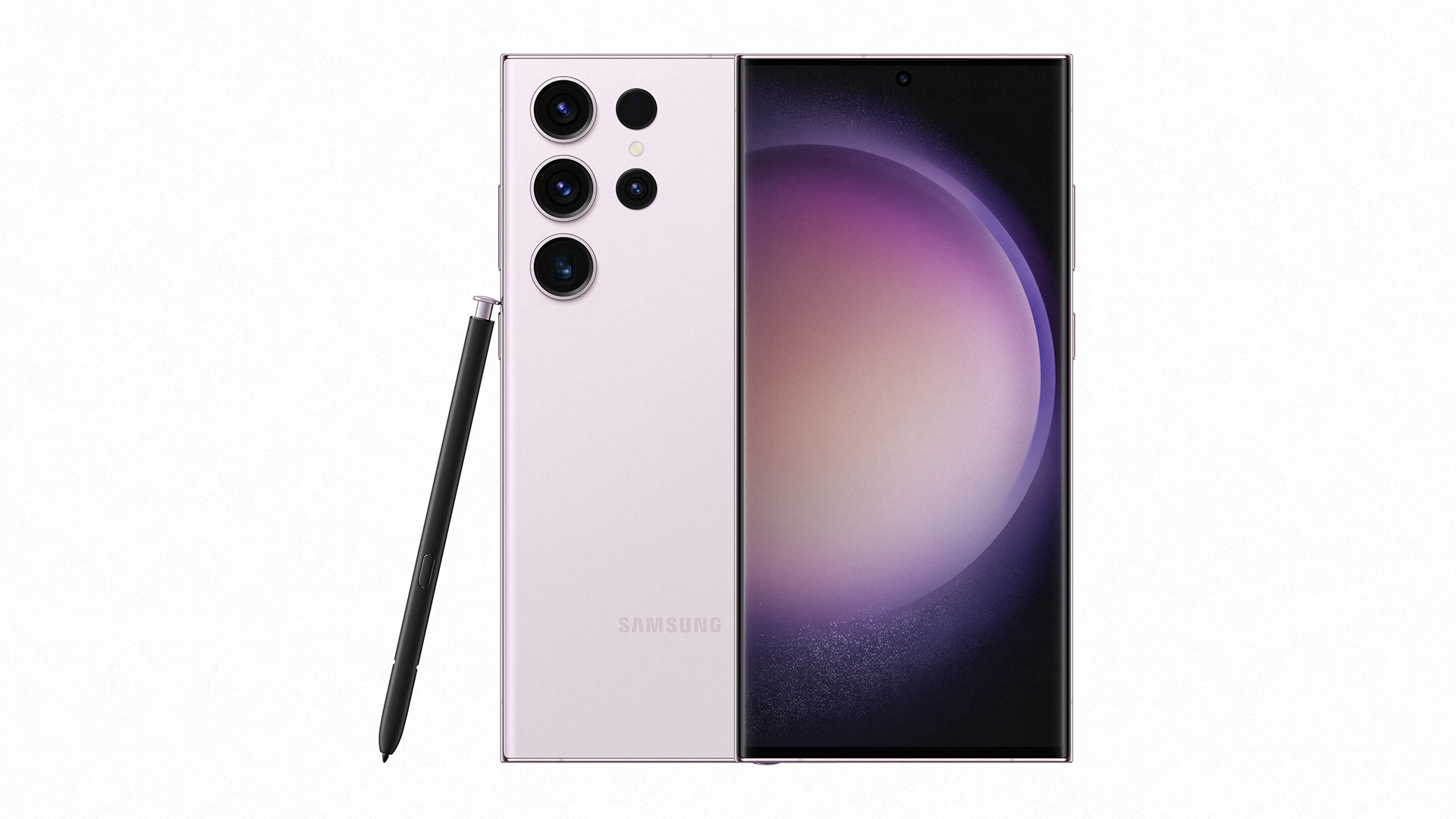
Screen size 6.8-inch
Screen type Dynamic AMOLED
Screen resolution 1440 x 3088 pixels (500 ppi)
Finishes x4 (Cream, Lavender, Phantom Black, Green)
Operating system Android 13 (One UI 5.1)
Storage 256GB / 512GB / 1TB
RAM 12GB
Another feature that is becoming synonymous with the Galaxy Ultra line is the S-Pen, the stylus formerly affiliated with Samsung’s now-extinct Galaxy Note series. It pops in and out of the frame with a satisfying click and vibration, and is a useful (if slightly gimmicky) addition that allows you to scrawl notes on the screen and even control some of the phone’s functionality remotely.
Getting on to what we’re most interested in, the phone’s AV features, the S23 Ultra supports HDR in the HDR10+ format, meaning content from Amazon Prime Video, YouTube and Google Play should get a boost, but since the phone lacks support for Dolby Vision, Disney Plus and Netflix won’t get as much love as the aforementioned services. However, Dolby is featured on the audio side of things, with Dolby Atmos support for both the phone’s speakers and via both wired and wireless headphones.
Finally, the S23 Ultra is powered by Qualcomm’s latest Snapdragon 8 Gen 2 processor, although the S23 receives a unique “for Galaxy” variant here. The suffix doesn’t allude to much, and in reality, it just means that this version of the 8 Gen 2 has a slightly higher clock speed than on other devices. Putting it into practice, the S23 Ultra is blisteringly fast and responsive in day-to-day use, with no noticeable stuttering or lag when opening apps.
Picture
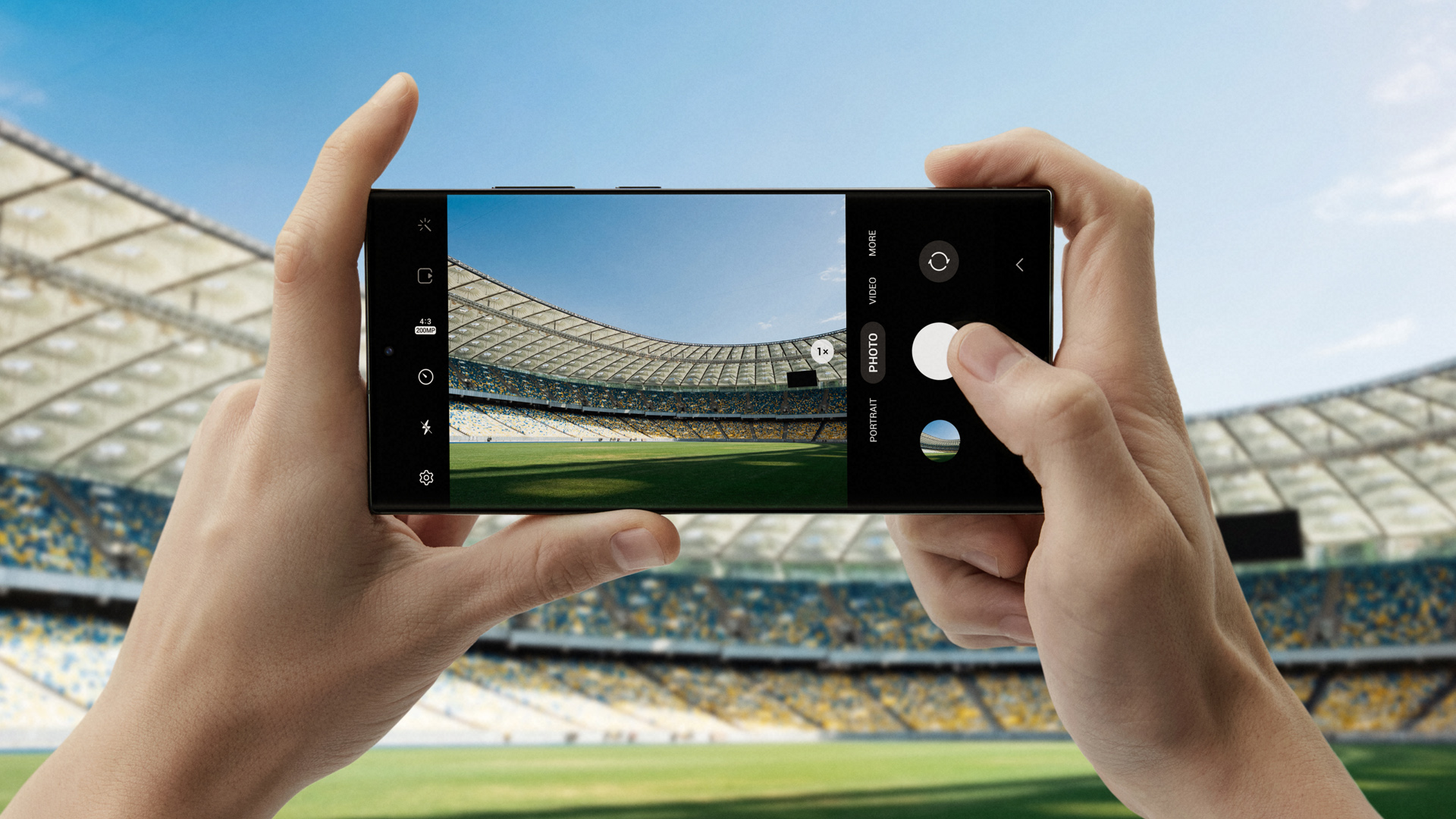
With Samsung’s pedigree when it comes to TVs and history of providing excellent displays on its smartphones, it's no surprise that the picture performance on the S23 Ultra is mostly very good. Movies feel right at home on the expansive AMOLED display, leaning towards the vibrant and punchy colours that have become synonymous with Samsung up to this point.
This leads to some slightly warmer-looking skin tones and reddish complexions at times, but it's by no means unpleasant, and there is an option to knock the display’s warmth back in the settings menu. Watching a section of Le Mans 66 (or Ford v Ferrari for US readers), the slightly punchier colours are appreciated when it comes to the golden Californian skies and glistening supercars. Switching over to the opening of Rogue One: A Star Wars Story, we can see where colours begin to look a bit overdone, though, with the foliage within the opening scene verging on neon green.
Black levels are an immediate highlight thanks to the OLED technology, and there’s a good amount of dark detail during a young Jyn Erso’s escape to the sanctuary of a secluded cave during the Empire’s raid. A decent amount of detail can be seen on the rocks despite them being mostly cast in shadow. Overall, the Ultra’s display manages to capture a good amount of detail in environmental, skin and clothing textures, avoiding the sometimes overly etched effect of the generally superb Sony Xperia 1 IV.
Side by side, we prefer the Samsung’s slightly more subtle and balanced approach in some cases, with its softer display making the Xperia seem sometimes overly sharp. However we can’t deny that the Sony’s 4K display takes the edge when it comes to capturing extra detail, and it also trumps the Samsung when it comes to motion, as some blur is noticeable when it comes to fast-moving spacecraft and character movements in this Star Wars flick.
The real thorn in the Galaxy’s side is Apple’s iPhone 14 Pro Max. Side by side we prefer the iPhone in practically every picture aspect. The iPhone’s Dolby Vision-equipped display provides much more natural and realistic colours and skin tones. This is thanks to its slightly less vibrant display and more balanced approach to contrast, which adds more subtle detailing even in brightly coloured objects. The motion blur found on the S23 Ultra is also not an issue for the iPhone and it retains its strengths when it comes to black depth thanks to its own OLED panel.
The iPhone clearly betters the S23 Ultra when it comes to picture, and considering Samsung has made no real effort to upgrade the viewing experience on the Galaxy S23 Ultra, it slips behind the 14 Pro Max – which now also costs less.
Sound
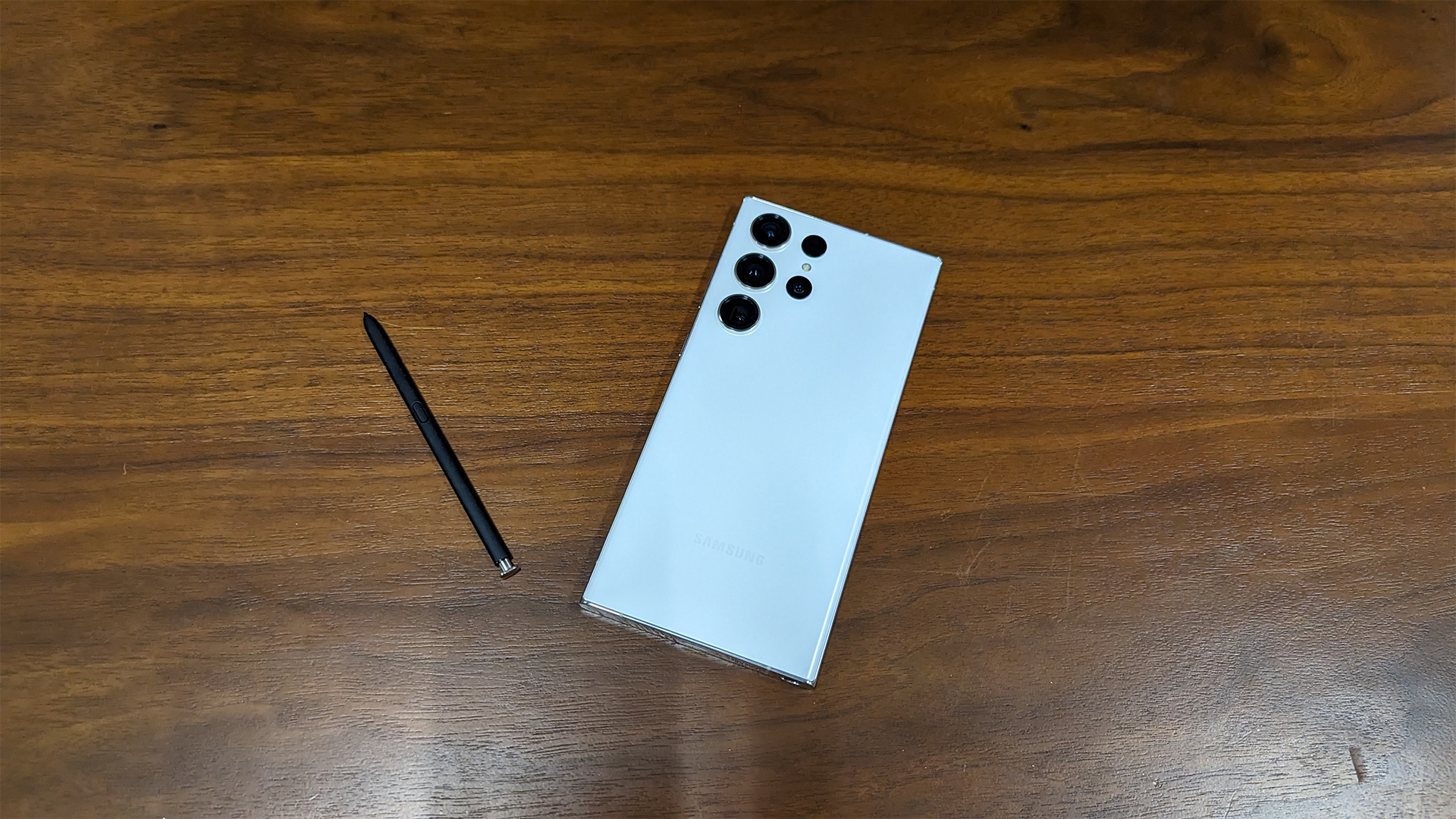
Sound performance on the S23 Ultra is actually the opposite of what we find with many of the smartphones we test, as here the speaker audio is possibly more impressive than that of the headphones. Not that the S23 Ultra actually sounds better via the speakers than it does with headphones, but that its speaker performance is better than that of most rivals and its headphone performance isn't.
With Dolby Atmos support for the speakers, we find that the Samsung provides a surprisingly wide and well-organised audio presentation. This likely benefits from the Samsung’s large frame, which allows for more physical separation and therefore a wider soundstage, but we also feel that there is a slight additional warmth and naturalness to the Samsung’s speakers. Voices appear to correspond well to the subject’s position on the screen, and there is a touch more depth than is offered by iPhone, which sounds a bit flatter and less spacious in comparison. It’s worth noting that the iPhone’s speakers can go louder than the Samsung’s, but the S23 Ultra’s speakers are more than adequate in most scenarios.
Headphone performance, on the other hand, is not quite as good as that of the iPhone. That’s not to say it's unpleasant, as the Samsung offers a detailed and clear delivery when we throw our favourite tricky test track Limit To Your Love by James Blake at it, but it lacks the warmth and natural tone that it seems to possess with its speakers. The Samsung sounds slightly mechanical and analytical when compared to the iPhone’s rich and natural presentation. The iPhone also exceeds the Samsung when it comes to dynamics, with the former providing more impact.
One area where the Samsung does excel is with spatial audio playback, as streaming the Atmos version of Supercut by Lorde on Tidal makes for an impressive show of immersive audio – though it has to be said that the iPhone also handles this very well.
Verdict
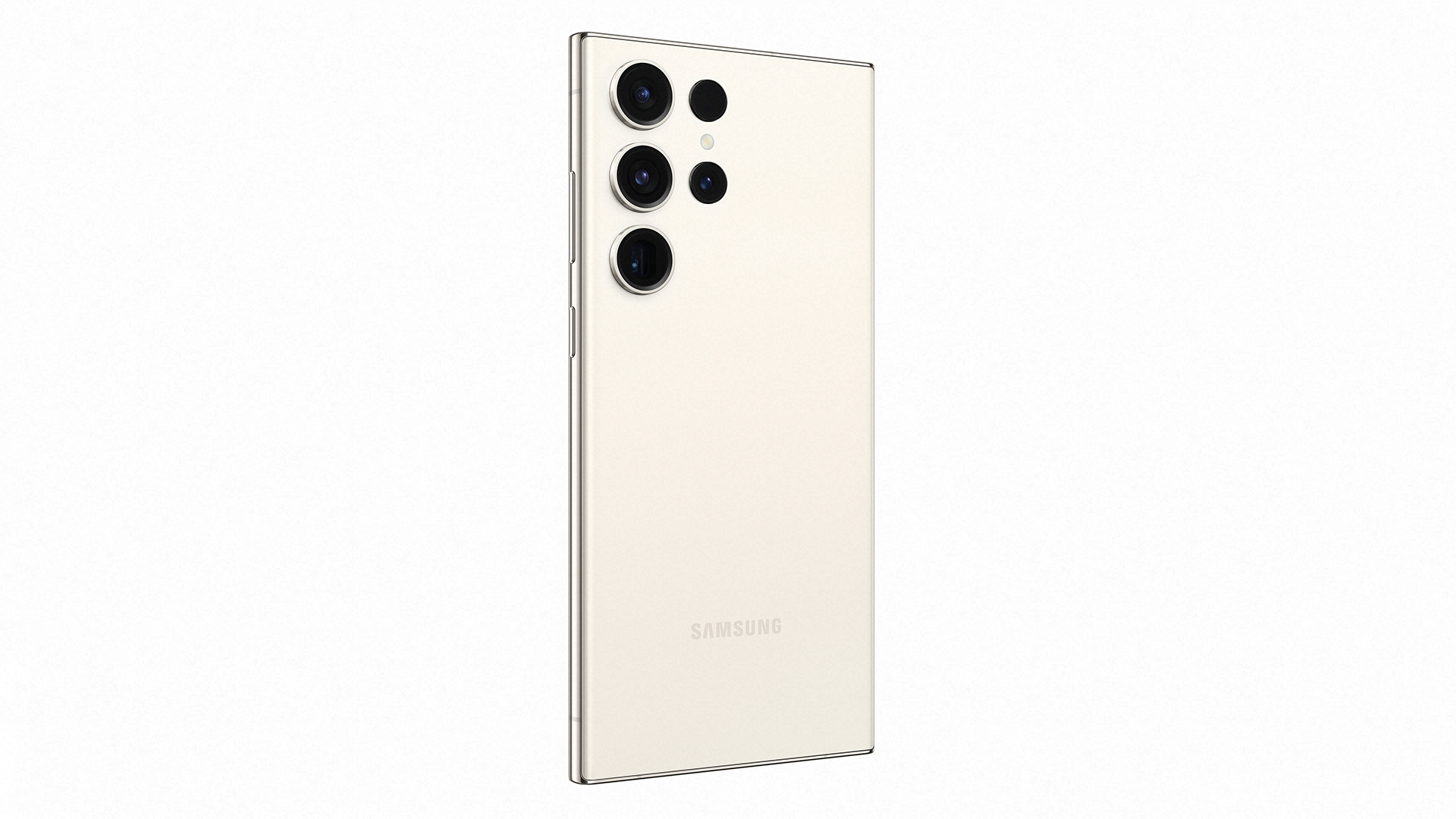
The Samsung Galaxy S23 Ultra is another case of the iterative phone cycle we have found ourselves in within the past year. Not much has changed from last year’s model apart from the camera and processor, and while both are good additions, we’re not sure if they justify such a steep rise in pricing.
And when it comes to a phone that costs this much offering little to no upgrades in the AV department, it leaves us feeling a little bit disappointed – especially now that Apple has upped its game even further with the iPhone 14 Pro Max. The Samsung Galaxy S23 Ultra is still a great daily handset, and it provides a solid picture and sound experience – but for the money, it needs to be outstanding.
SCORES
- Picture 4
- Sound 4
- Features 5
MORE:
Read our review of the Sony Xperia 1 IV
Also consider the iPhone 14
Read our iPhone 14 Pro Max review
The best smartphones for music and movies
What Hi-Fi?, founded in 1976, is the world's leading independent guide to buying and owning hi-fi and home entertainment products. Our comprehensive tests help you buy the very best for your money, with our advice sections giving you step-by-step information on how to get even more from your music and movies. Everything is tested by our dedicated team of in-house reviewers in our custom-built test rooms in London, Reading and Bath. Our coveted five-star rating and Awards are recognised all over the world as the ultimate seal of approval, so you can buy with absolute confidence.
